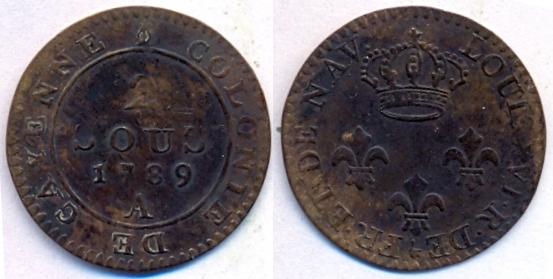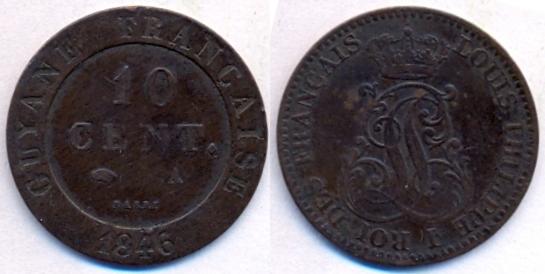 |
 |
| French Guiana (Guyane) | ||||||
 |
 |
|
||||
|
Jan 1500 Coastline sighted by Spanish Capt. Vicente Yáñez de Pinzón.
1604 French expedition under Daniel de La Ravardière. 1624 French establish Sinnemary as a trading post. 1637 French establish Cayenne as a trading post. 27 Nov 1643 - 1654 French settlement at Cayenne (under the Compagnie de Rouen) 1654 - 15 May 1664 Dutch occupation. 15 May 1664 Re-occupied by France (Guyane Français); under the Compagnie de la France Équinoxiale to 1674). 1674 French Colony. 05 May 1676 - Dec 1676 Dutch occupation of Cayenne. 25 Oct 1797 - 1801 Organized as département of France; from 1801 a colony 12 Jan 1809 - 08 Nov 1817 Portuguese/Brazilian occupation. 08 Nov 1817 Restored to France. 10 Jun 1848 Slavery Abolition Day. 1852 - 1946 Penal colony on Devil's Island. 14 Sep 1939 - 16 May 1943 Subordinated to High Commissioner and Commander of the Theater Atlantic West (under Martinique). 16 Jun 1940 - 18 Mar 1943 Administration loyal to Vichy France (from 18 Mar 1943, under Free French). 06 Jul 1930 - 19 Mar 1946 French Guiana divided into two territories; French Guiana (Cayenne and the Atlantic coast) and Inini (inland area). 19 Mar 1946 French overseas département (previously colony). 28 Mar 2003 French overseas region. 10 Jan 2010 Referendum votes 69.8% against increased autonomy. |
||||||
 |
||||||
|
French Guiana (French: Guyane Française; officially
just Guyane) is an overseas region of France, consisting of a single
overseas department located on the northern Atlantic coast of South America.
It has borders with two nations, Brazil to the east and south, and Suriname
to the west. Its 83,534 km2 have a very low population density of less than
three inhabitants per kilometre squared, with almost half of its living in
the urban area of
Cayenne (formerly known
as La Ravardiere 1643-1664), its capital. Defense is the responsibility of
France. The addition of the adjective "French" in English comes from colonial times when five such colonies existed (The Guianas), namely from west to east: Spanish Guiana (now Guayana Region in Venezuela), British Guiana (now Guyana), Dutch Guiana (now Suriname), French Guiana, and Portuguese Guiana (now Amapá, a state in far northern Brazil). French Guiana and the two larger countries to the north and west, Guyana and Suriname, are still often collectively referred to as the Guianas and comprise one large shield landmass. French Guiana was originally
inhabited by a number of indigenous American people. It was settled by the
French during the 18th century. According to Bill Marshall, "The first
French effort to colonize Guiana, in 1763, failed utterly when tropical
diseases and climate killed all but 2,000 of the initial 12,000 settlers.
During its existence, France transported approximately 56,000 prisoners to
Devil's Island. Fewer than 10 percent survived their sentence. The coast of
Guiana was sighted by Columbus in 1498 and explored by Amerigo Vespucci in
1499. The French established the first successful trading stations and
settlements, and placed the area under direct control of the French Crown in
1674. Portuguese and British forces occupied French Guiana for five years
during the Napoleonic Wars. Devil's Island, the notorious penal colony in
French Guiana where Capt. Alfred Dreyfus was imprisoned, was established in
1852 and finally closed in 1947. Therefore its infamous known as Île du Diable (Devil's Island), the site of penal
settlements from 1852 until 1951. When France adopted a new
constitution in 1946, French Guiana voted to remain within the French Union
as an Overseas Department. In 1964 the French president, Charles de Gaulle,
decided to construct a space-travel base in French Guiana. This would
replace the existing Sahara base in Algeria and stimulate economic growth in
French Guiana. A large part of the department's economy derives from the
presence of the near-equatorial Guiana Space Centre, the European Space
Agency's primary launch site. The department is particularly suitable for
the purpose both because it is near to the equator and because of the
extensive access to a large ocean. The Guiana Space Centre a short distance
along the coast from Kourou has grown considerably since the initial
launches of the “Véronique” rockets, and has brought commercial success to
the European space industry with launchers such as the Ariane 4 and Ariane
5. |
||||||
| Currency:
Euro = 100 euro cents In the late 18th century, a series of 2 sous coins was struck for the colony as Colony of Cayenne, mainly dated 1789. It is probable that contemporary imitations of these issues, many emanating from Birmingham, England, outnumber the originals. These, both genuine and bogus, host coins for many West Indies counterstamps, Livre = 20 Sols (Sous) = 80 Liards. Notable coin of Colony of Cayenne are: 2 Sous 1789A and 2 Sous 1816A billion. French Francs = 100 centimes were used till 31st Dec 2001. |
||||||
|
||||||
|
In 1794, as an Overseas Department, Guiana used the coins of France, Franc = 100 centimes. However, the Franc used in the former colony was always distinct in value from that of the homeland as well as that used in the islands of the French West Indies. Later on 01st January 2002, Euro was introduced. |
||||||
|
||||||
| Countries / Territories | ||||||
| Chiefa Coins | ||||||


